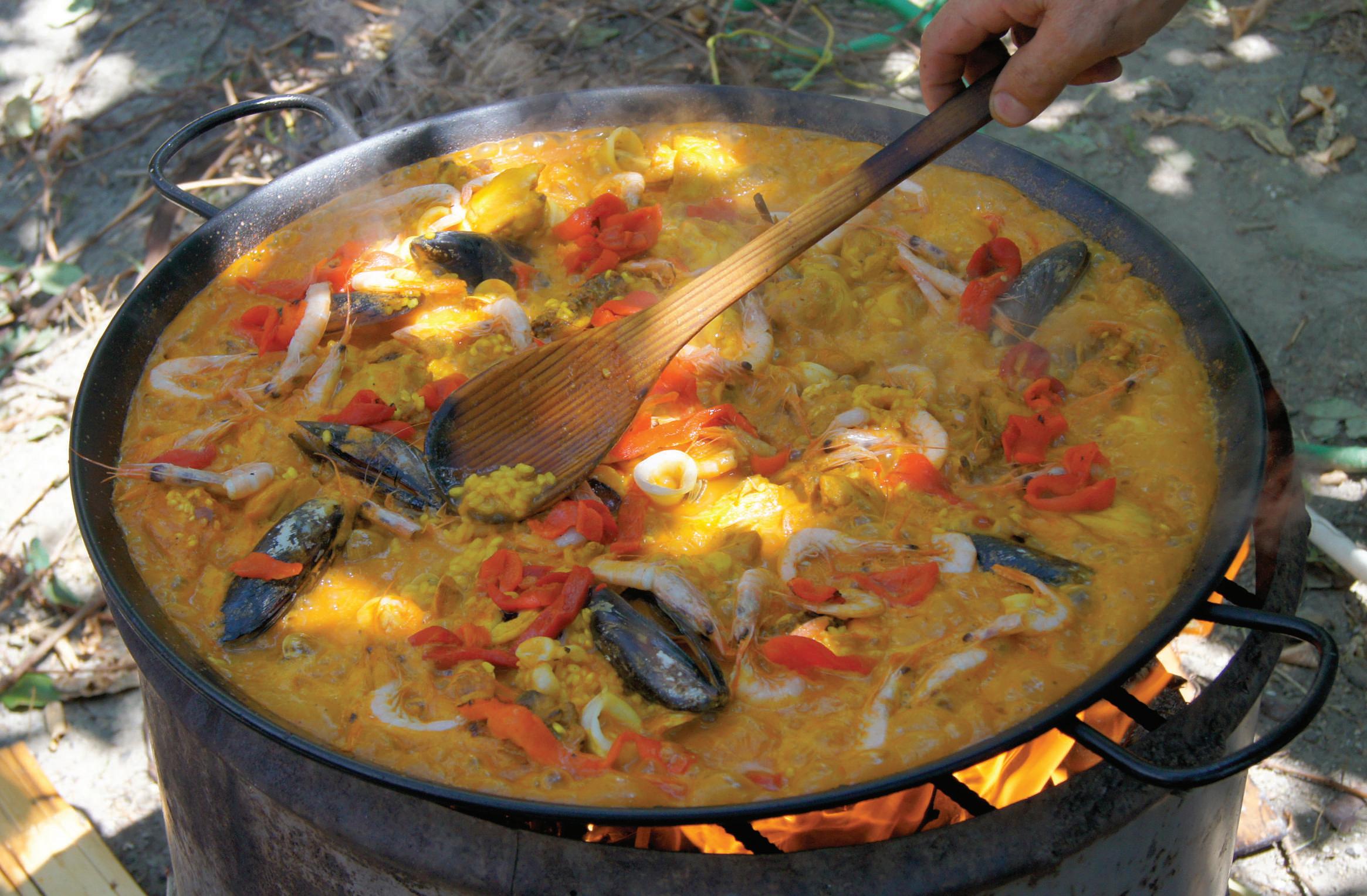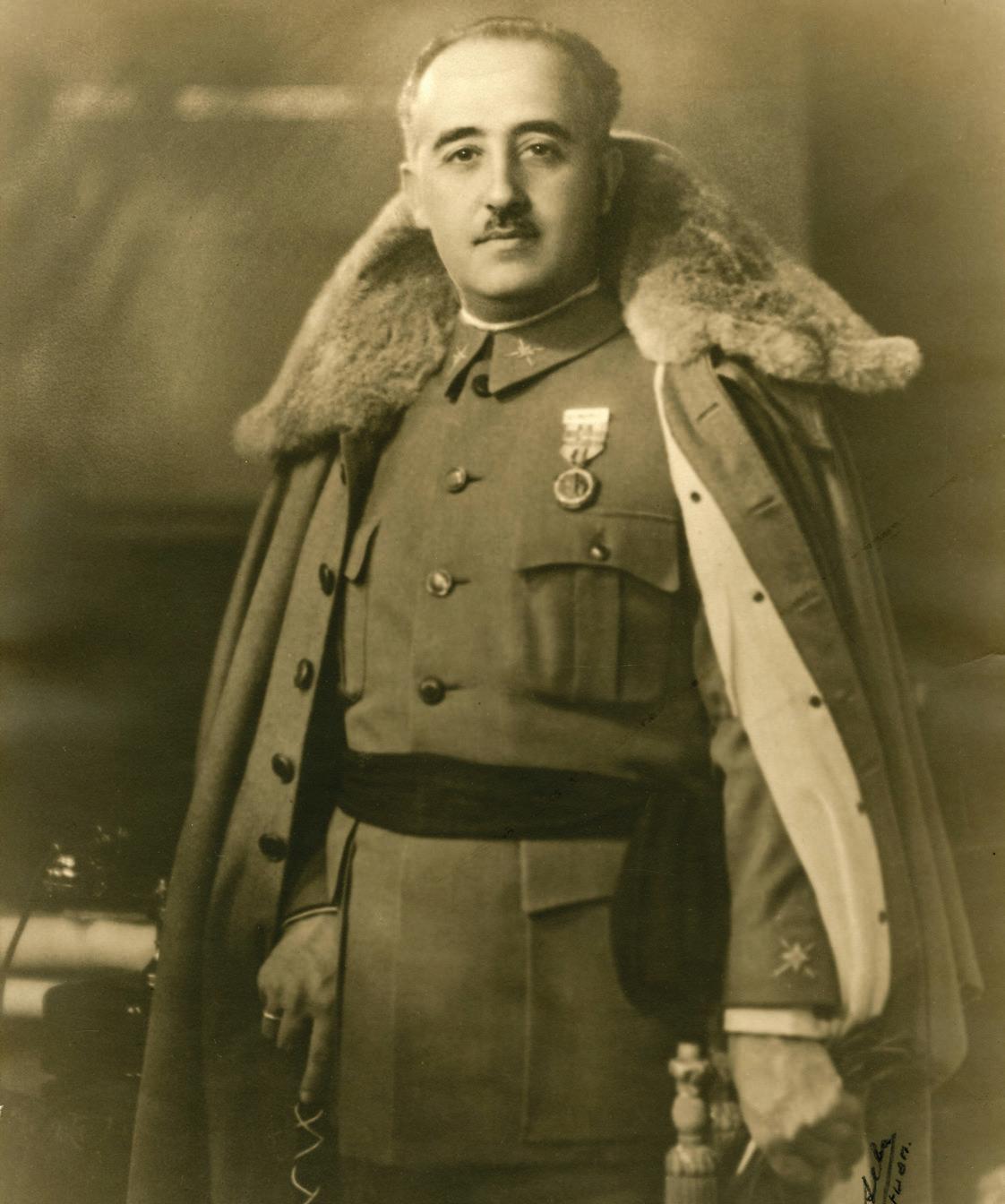
7 minute read
CLASSIC TRADITION
FIRE & RICE Traditional Paella Valenciana (Photo Courtesy)
HOW PAELLA WENT LATIN
BY ANA KINKAID

Ana Kinkaid’s interest in Latin cuisine began as she traveled the world as the daughter of an American diplomat. Te sought-after culinary consultant works with companies seeking to share their unique stories with chefs and restaurateurs. Her clients range from Stash Tea to Taylor Shellfsh Farms. Ms. Kinkaid is a regular speaker on emerging world food trends at Te Culinary Institute of America and American Culinary Federation conferences, where she shared this talk about the history of the iconic dish and kindly agreed to share it with our readers.
s interest in Latin food grows, one of the most popular yet mysterious dishes is paella. Te story of paella begins when the Moors of North Africa conquered most of Spain in 710 AD. Te advanced culture brought new breakthroughs in agriculture, science and medicine to the weary peninsula. Tey built the magnificent Alhambra, today a UNESCO World Heritage Site, and even translated the Gospels from Latin into the Spanish of the day so that all might read them. Te Moors ruled with tolerance and understanding until 1492. A
Important to the story of paella is also the introduction of an earthenware bowl, called a tagine. (Photo courtesy)

During their 700-year reign, they cleared the disease-infested marshes near the city of Valencia, built irrigation systems and introduced short grain rice to southeastern Spain, where it is still harvested today.
Important to the story of paella is also the introduction of an earthenware bowl, called a tagine. Its slanted sides centered the cooking rice at the pan’s bottom, concentrating the flavor and creating a unique rice crust when cooked correctly.
By the time the Catholic Monarchs, Ferdinand and Isabella, conquered Spain in 1492, the humble tagine had long lost its lid, but the

Moorish architecture in the Court of Lions, Alhambra, Granada, Spain. (Photo courtesy)

Portrait depicting Benito Juárez by Salvador Martínez Báez in the Library of Congress Hispanic Reading Room. (Photo courtesy)


clay pan had become a staple in the Spanish kitchen.
Long years of conflict left the country nearly bankrupt. Te poor suffered the most with their daily meal reduced to wild snails or maybe an unlucky rabbit cooked on a bed of rice in a worn tagine, now called a “paella,” meaning a “leftovers pan.”
Even the King and Queen felt the need for money and decided to convert small farms into more profitable pasture for the wool-producing Merino sheep. As farmers faced eviction from their land, the sea and the New World seemed their only opportunity.
When Columbus sailed in 1492 and discovered Cuba and the Caribbean Islands, aboard his ships were former farmers, many literally learning the ropes as they sailed, for they were so desperate they were willing to risk sailing off the edge of the world. And aboard those ships were also bags of Valencia rice – serving as both ballast and food.
Upon arriving in the New World, they discovered a realm unlike anything they had ever experienced before. Everything was new, exotic and apparently free for the taking, at least from the Spanish point of view.
In the Old World everything belonged to someone, usually the rich. In Spain, the nobles most often dined on shellfish because they owned the tidelands. In the New World, the mussels, clams and oysters were free for the taking.
Within a short time, the endless bounty of shellfish replaced the snails and rare rabbit in the farmer’s meager homeland dish of rice. Additional flavor was added when natives shared the spicy kick of hot peppers with Spanish cooks.
By 1521, a new breed of explorer arrived, ready to search anew for gold and fame. Te man leading that expedition was Hernán Cortés and the country he discovered was Mexico.
After several unsuccessful landing attempts, he finally brought his small fleet of ships to rest at the site of the present day city of Veracruz. Pressing inland, he discovered the spectacular Aztec capital, Tenochtitlan, the site of Mexico City today.
Driven by the desire to possess the vast wealth he saw there, battles soon erupted between the Spanish soldiers and Aztec warriors. Advanced technology (the gun and the horse), along with disease, largely won the day for the Spanish as thousands upon thousands of Aztecs died defending their capital.
Once victorious, the Spanish set about evaluating their new territorial possession and found the land offered many new and wonderful resources. Te flat land near Veracruz, where they first landed, proved to be excellent for growing rice.
Shellfish were abundant nearby and the warm sun produced a previously unknown vegetable that matched perfectly with rice, peppers and shellfish – the tomato.
As the decades passed, it became harder and harder for Spain to administer their New World colonies from faraway Madrid. Spaniards born in the New World, often with native wives and children, were appointed as governors to bridge the distance. As a result, European cuisine was intermingled with native dishes, including the now modified rice dish from Valencia.
By the 1800s, often inspired by the example of America’s independence, Spain’s many New World colonies were beginning to seek their own freedom from a remote monarchy. By 1857, these changes had come full circle when Mexico chose Benito Juárez, a full-blooded Native American, as President.
Sadly, while the New World was reaching for freedom and prosperity, Spain was experiencing economic disaster. For centuries, the wealth of the New World poured into the country unchecked, causing vast inflation in the prices of goods.
In the 1490s, additional favor was added to the dish when New World natives shared the spicy kick of hot peppers with the Spanish cooks. (Photo by Carole Topalian)

During the late 1880s, and again in the 1930s, political challenges to this unsuccessful economic pattern arose, only to be crushed by rigid traditional forces.
Perhaps the cruelest oppression came during the 1930s under the Dictator Franco, who especially hated Valencia because it was the capital of the rebellious Second Republic. He so hated Valencia, he ordered that anyone making or eating Valencia’s favorite traditional rice dish could be shot on sight.
Yet, as is the fate of all dictators, the economic policies of repression and control failed. By the late 1950s, Spain was on the verge of bankruptcy. Finally, Franco accepted the advice of his finance ministers and agreed to heavily promote tourism to Spain, which he had once sought to isolate from the modern world.
Spain’s beaches on the Mediterranean are among the world’s finest, and it was these beaches that the new Tourist Bureau decided to promote, including the coastal city of Valencia.
Among the welcomed tourists arriving from France were chefs who, of course, wanted to taste the local food. Teir enthusiasm centered primarily on one dish – Valencia’s favorite rice dish, its crisp crust now enhanced with shellfish, peppers and tomatoes – all gifts from the New World. Ten, as now, it was served in the same side-slanted pan it was cooked in with guests eating from the outer edge to the center. It was a communal meal that amazed and delighted the chefs.
Yet, knowing Franco’s dislike of all things relating to Valencia, the trade authorities knew if they were going to promote the dish (and they did), it could not be named after Valencia. As they questioned the region’s cooks, they found the pan in which it was cooked was still called by its original Spanish name, “paella.”
And that is how Valencia’s humble rice dish became known as paella worldwide. As a result, the rice dish of Cuba, that had always been called “Arroz Cubana,” was quickly renamed “Paella Cubana,” and Mexico’s “Arroz Veracruz” became “Paella Veracruz.”
Today, while Valencia can rightly claim its fame as the home of paella, there are endless variations from the tip of South America (paella colored in squid black ink) to the Philippines, where an elaborate everything-included paella (seafood, shellfish, sausage, chicken, vegetables, peppers and more) is prepared as a special holiday feast.
In spite of its humble beginnings, paella is truly a global dish, its circular fame mirroring the shape of the pan from which it claims its name. But paella is far more than a brief culinary experience – it can remind us that we are all part of a past that links inescapably to an enriched inclusive future, a future where all are invited to dine together in peace and fellowship.
What dish, so full of history and tasty ingredients, could be a better example of that vision then paella gone Latin!
Editor’s Note: With such a rich history, we hope you can’t wait to have a little paella of your own. View, taste and enjoy paella in all its glory and in just about every variation at Chef Johnny Hernandez’ Eleventh Annual Paella Challenge from noon to 4 p.m. on Sunday, March 8 at Mission County Park. Tickets are available at www.paellachallenge.com.










